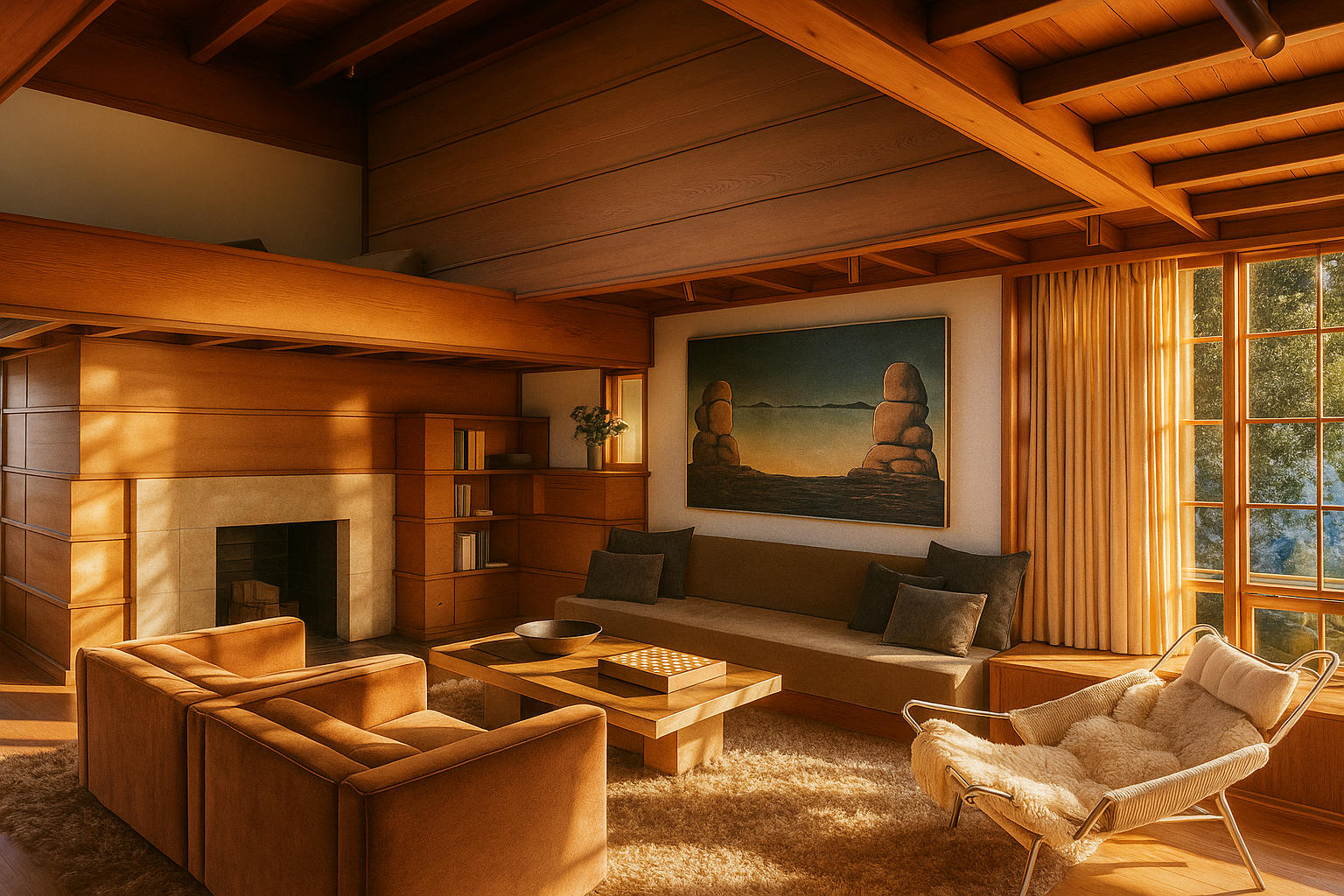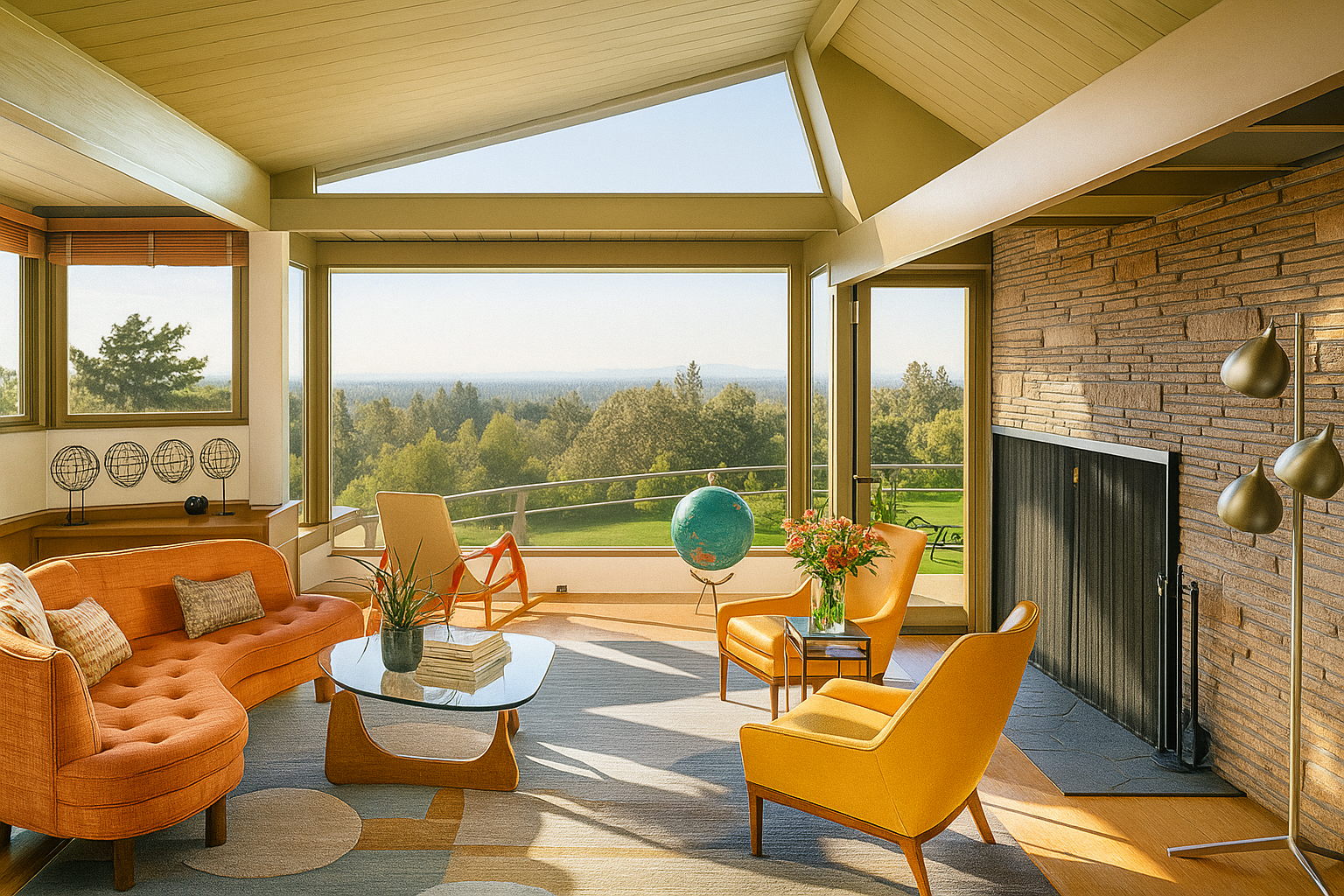Rudolph Schindler — The Radical Architect Who Invented Modern California Living
Introduction: The Visionary Who Built the Blueprint for Modern Life
Long before Mid-Century Modern became a style, Rudolph Schindler was already living it. An Austrian-born architect who settled in Los Angeles in the early 1920s, Schindler’s work redefined what a home could be — simple, flexible, and inseparable from nature.
Schindler was more than a designer; he was a pioneer of lifestyle. His revolutionary Kings Road House (1922) wasn’t just one of the first modern homes in America — it was a manifesto for a new way of living. Open, communal, and deeply connected to the environment, it embodied principles that would later define California Modernism and the Mid-Century Modern home movement.
Throughout his career, Schindler worked across Los Angeles, Palm Springs, and the California coast, crafting spaces that merged art, architecture, and daily life. His influence extended to contemporaries like Richard Neutra, his friend and rival, and to generations of architects who would shape the postwar modern aesthetic.
Today, Schindler’s homes stand as living works of art — inspiring collectors, preservationists, and modern design enthusiasts who see in them the roots of California’s architectural identity.
Design Philosophy & The Birth of California Modernism
Rudolph Schindler’s architecture was guided by an experimental and humanistic philosophy he called “space architecture.” For Schindler, architecture wasn’t about style or ornament — it was about shaping space to reflect how people truly live.
He rejected European formality and embraced the informality of California life. His designs blurred the line between interior and exterior, between shelter and freedom. In doing so, Schindler laid the foundation for what would become known as Mid-Century Modern architecture — decades before it became a movement.
Core Principles of Schindler’s Architecture
Indoor–Outdoor Integration: Homes designed as extensions of their landscapes, with sliding panels, patios, and gardens woven into living areas.
Material Innovation: Use of concrete, redwood, plywood, and glass in expressive yet affordable combinations.
Flexible Floor Plans: Modular rooms that could adapt to changing needs and social dynamics.
Minimal Ornamentation: Clean geometric forms that emphasized space and proportion over decoration.
Communal Living: Spaces that encouraged connection, collaboration, and creativity — especially among artists and intellectuals.
Human Scale: Buildings that responded to light, climate, and daily rhythms of life in California.
Schindler’s vision of simplicity and flexibility directly inspired later modernists — including Neutra, Pierre Koenig, and Raphael Soriano — and remains central to how we understand Mid-Century Modern living today.
Notable Projects & Architectural Highlights
Schindler’s portfolio is a tapestry of innovation, each project exploring new relationships between form, function, and lifestyle. His homes were not built to impress — they were built to liberate.
Kings Road House (West Hollywood, 1922)
Often called “America’s first modern house,” the Schindler House redefined the concept of domestic architecture. Constructed from tilt-up concrete panels and redwood, it was designed as a communal live-work space for two couples — including Schindler and his wife, Pauline. Open-air sleeping porches, sliding partitions, and shared courtyards blurred the boundaries between private and public, indoor and outdoor.
Lovell Beach House (Newport Beach, 1926)
Commissioned by the same client who would later hire Neutra, this beachfront structure is a masterclass in concrete modernism. The exposed frame, elevated living spaces, and flowing interiors anticipate the bold experimentation of later Mid-Century Modern homes.
How House (Silver Lake, 1925)
Built into a hillside, the How House demonstrates Schindler’s skill at integrating architecture with topography. Using split-level designs and natural materials, he created intimate, layered spaces that open to panoramic views.
Baxter House (Silver Lake, 1939)
An evolution of Schindler’s mature style, this home showcases his sensitivity to climate and light. Plywood, glass, and redwood combine in rhythmic harmony, achieving warmth and intimacy within a strict modern vocabulary.
Van Patten House (Studio City, 1947)
One of Schindler’s late-career masterpieces, this home epitomizes the postwar California Modern ideal — compact, efficient, and deeply attuned to its natural surroundings.
Each of these homes embodies Schindler’s lifelong pursuit of architectural freedom — structures as living organisms that adapt, breathe, and respond to their inhabitants.
Schindler’s Enduring Influence on Mid-Century Modern Real Estate
Schindler’s ideas laid the foundation for what would become the California Mid-Century Modern home — an architectural movement that continues to define neighborhoods from Los Angeles to the Bay Area.
His concepts of open plans, seamless glass walls, and indoor–outdoor living became standard features in postwar housing, influencing architects such as Neutra, Cliff May, and Joseph Eichler. The DNA of Schindler’s vision lives on in the Eichler tracts of Silicon Valley, the Case Study Houses of Los Angeles, and the Modernist revivals of today’s real estate market.
Buyers seeking authentic Mid-Century Modern homes — those that emphasize connection, simplicity, and design integrity — are, in essence, searching for Schindler’s dream: a home that feels both timeless and alive.
Across California’s design-conscious communities, Schindler-inspired homes are among the most desirable properties, commanding attention from collectors, preservationists, and design-focused buyers who understand the historical and emotional significance of this architectural legacy.
The Boyenga Team: Curators of California Modern Heritage
The Boyenga Team, California’s trusted experts in Mid-Century Modern and architectural real estate, share Rudolph Schindler’s passion for authentic design and livable modernism.
Based in the Bay Area, the Boyenga Team are not just agents — they are stewards of architectural history. Their deep understanding of Schindler’s influence allows them to guide clients toward homes that embody the same sense of openness, light, and innovation that Schindler championed.
Why the Boyenga Team Are Leaders in Mid-Century Modern Real Estate:
Specialized expertise in Mid-Century Modern, Eichler, and Schindler-style homes across the Bay Area.
Architectural literacy that highlights each home’s design pedigree and historical context.
Strategic marketing that connects architectural properties with design-savvy buyers.
Commitment to preservation, ensuring that California’s modernist legacy endures for future generations.
In many ways, the Boyenga Team continues the spirit of Schindler’s vision — helping modern Californians find homes that inspire creativity, connection, and calm. Their dedication mirrors Schindler’s belief that architecture is not merely shelter, but a way of life.
For homeowners and buyers drawn to authentic Mid-Century Modern living, the Boyenga Team offers unparalleled insight and access to some of California’s most architecturally significant properties.
Explore available listings and restoration resources at Eichler Homes for Sale — your hub for genuine California Modern design and Schindler-inspired architecture.
Lasting Legacy & Modern Market Relevance
Nearly a century after his first groundbreaking designs, Rudolph Schindler’s architectural principles continue to influence how Californians live. His belief in the emotional and spiritual power of space resonates with today’s emphasis on wellness, sustainability, and mindful living.
Schindler homes — and the Mid-Century Modern properties inspired by his vision — remain timeless investments in both design and lifestyle. They embody everything contemporary buyers seek: openness, natural light, efficiency, and authenticity.
Restorations of Schindler-designed and Schindler-influenced homes are increasingly popular, blending original details like built-in furniture, plywood paneling, and radiant-heated floors with contemporary updates for comfort and sustainability.
In today’s real estate market, Schindler-style homes continue to command attention for their rarity, artistry, and profound connection to California’s natural beauty.
In Summary
Rudolph Schindler didn’t just design homes — he designed a new way of living. His radical vision of simplicity, openness, and harmony with nature became the cornerstone of California Modernism and Mid-Century Modern architecture.
Through his influence on architects like Neutra, his pioneering use of materials and space, and his embrace of the California landscape, Schindler helped create the architectural soul of the West Coast.
Today, his spirit lives on — not just in his surviving homes, but in the ongoing efforts of advocates like the Boyenga Team, who work to preserve and promote authentic Mid-Century Modern living.
Experience Schindler’s legacy firsthand — explore genuine Mid-Century Modern and California Modern homes with the Boyenga Team, your trusted experts in design-driven real estate.
Contact Us and Begin Your Mid Mod Journey Today!
Boyenga Team + Compass Eric & Janelle Boyenga 📞 Call / Text : 408-373-1660 📧 Email : Eichlers@Boyenga.com 🌐 www.BoyengaTeam.com / www.EichlerHomesForSale.com DRE #01254724 / #01254725




